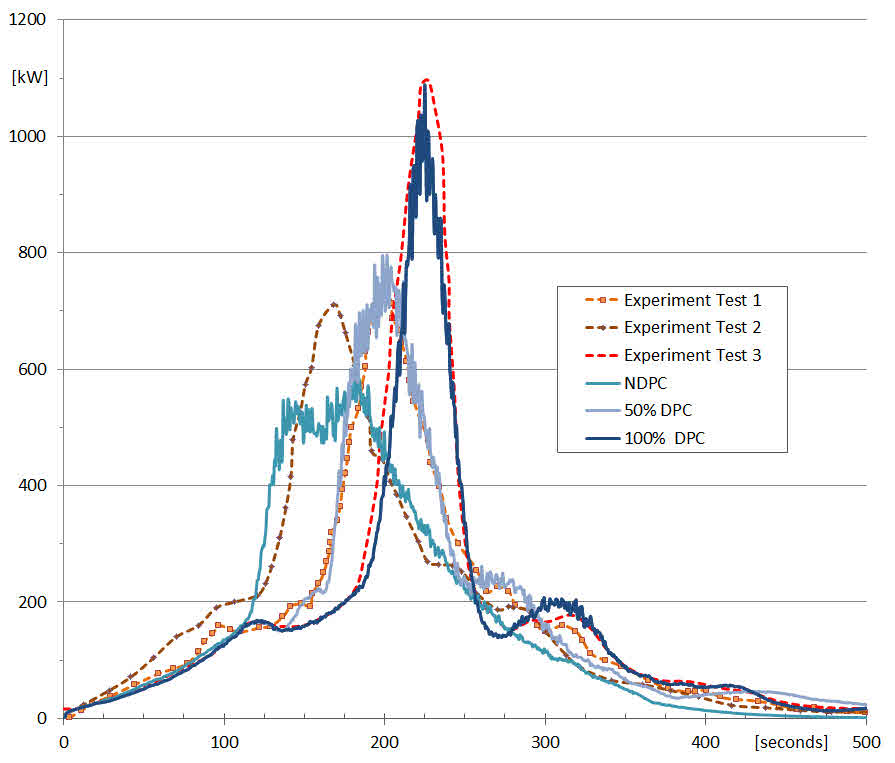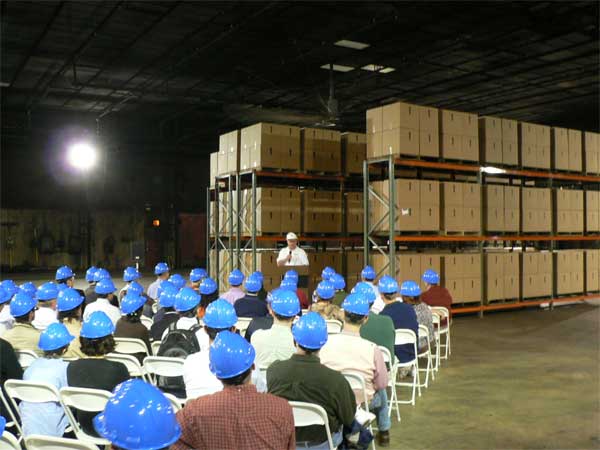Polyol Combustion Behavior of Polyurethane Foams
 Since the publication of our article on hazards of polyurethane foam fires, the investigation was extended to gather additional insights into PUF’s combustion behavior and associated combustion processes. As it is known, polyurethane foam under fire decomposes into TDI and Polyol. Specifically Polyol combustion processes are investigated in more detail, because Polyol combustion is responsible for the extremely high heat release rates observed during polyurethane foam fires. Heat release rates obtained from simulated (FDS) and experimentally obtained fire tests (NIST) produced very good correlation.
Since the publication of our article on hazards of polyurethane foam fires, the investigation was extended to gather additional insights into PUF’s combustion behavior and associated combustion processes. As it is known, polyurethane foam under fire decomposes into TDI and Polyol. Specifically Polyol combustion processes are investigated in more detail, because Polyol combustion is responsible for the extremely high heat release rates observed during polyurethane foam fires. Heat release rates obtained from simulated (FDS) and experimentally obtained fire tests (NIST) produced very good correlation.
This again formed the foundation of this study validating not only the models, but also providing reliable insights into the nature and sequence of Polyol combustion events.
NIST fire tested 4 ft by 4 ft wide and 4 inch thick polyurethane foam (PUF) slabs. Combustion processes were modeled with the Fire Dynamics Simulator to gain further insight into the fire behavior of PUF. Figure 1 displays heat release rate curves of the NDPC model with no Polyol combustion delays and heat release rate curves of the 100 % DPC model, which demonstrates the heat release under optimal combustion delays of Polyol. Very good correlation among simulated and experimental heat release curves was obtained validating the models.
It is concluded that after polyurethane foam decomposes into TDI and Polyol, delays in Polyol combustion significantly affect maximum observed heat release rates. Optimal combustion delays can result in twice the heat released compared when little or no delays are present. However, the fire tests have demonstrated that the amount of delay can vary among PUF burns even when using test specimens from the same batch of PUF foam. The causes for these combustion delays are unknown.
Furthermore, in the original investigation of polyurethane foam, it was concluded:
- The initial fire behavior of a PUF slab is characterized by the combustion of TDI. Once the TDI is consumed, Polyol will start to combust, creating a large increase in heat release. The flame heights generated during this process are several times higher than the flames generated by the initial TDI burn. This is an important consideration in warehouse scenarios, especially for high-piled rack storage of exposed expanded polyurethane plastics, considered as “Group A Expanded Plastics”.
- Polyol, before it starts to combust, has decomposed to a liquid state and therefore will flow or drip, potentially creating secondary ignition locations and hazards. Effectively it is a heated combustible liquid (with toxic products of combustion).
- While the Polyol burn is relatively short and vigorous, once most of it is consumed, it together with the remaining TDI, continues to burn at lower heat release rates for quite some time and until all PUF is burned off and the fire self-extinguishes.
- Smoke development during TDI burn is less than during Polyol burn, which is when smoke development peaks. It can be expected that visibility near PUF fires will be severely impacted – even shortly after ignition. However, actual impact on visibility and toxicity will depend on the individual room and environmental parameters under consideration.
- PUF fires generate considerable concerns and hazards to life safety, as combusted TDI and Polyol generate highly toxic fumes of oxides of nitrogen and carbon including extremely toxic hydrocarbon compounds, such as hydrogen cyanide.
- Modeling the fire dynamics of burning polyurethane foam slabs is difficult and requires in-depth knowledge of the various decomposition processes and chemical reactions involved.
More details on the Polyol combustion behavior can be found in the updated and extended article, Fire Hazards Of Polyurethane Foam.





